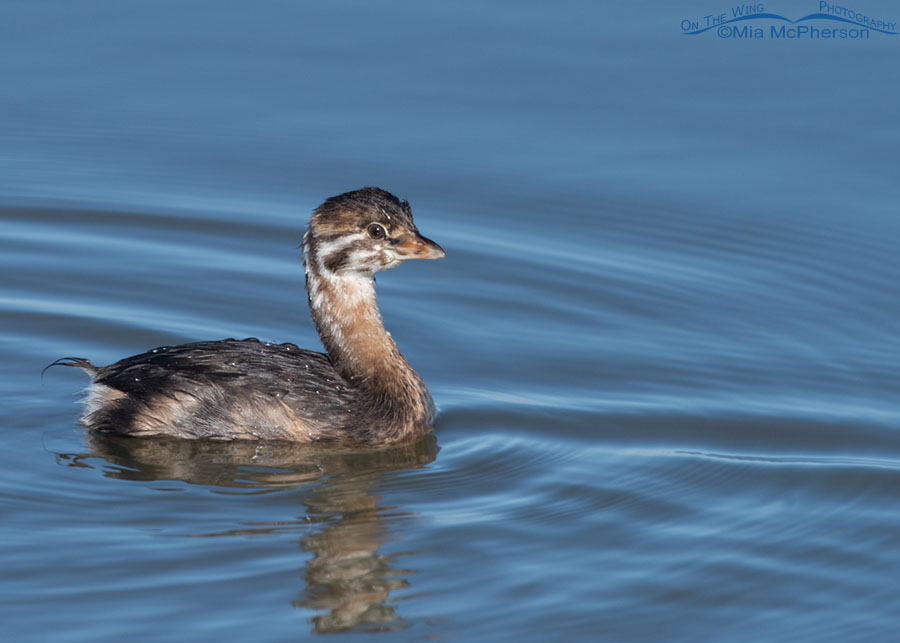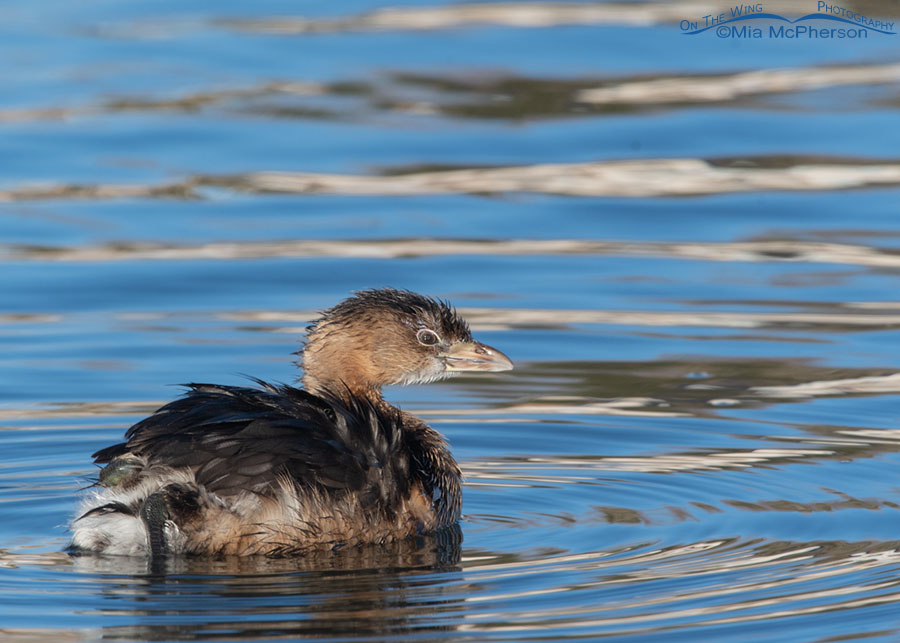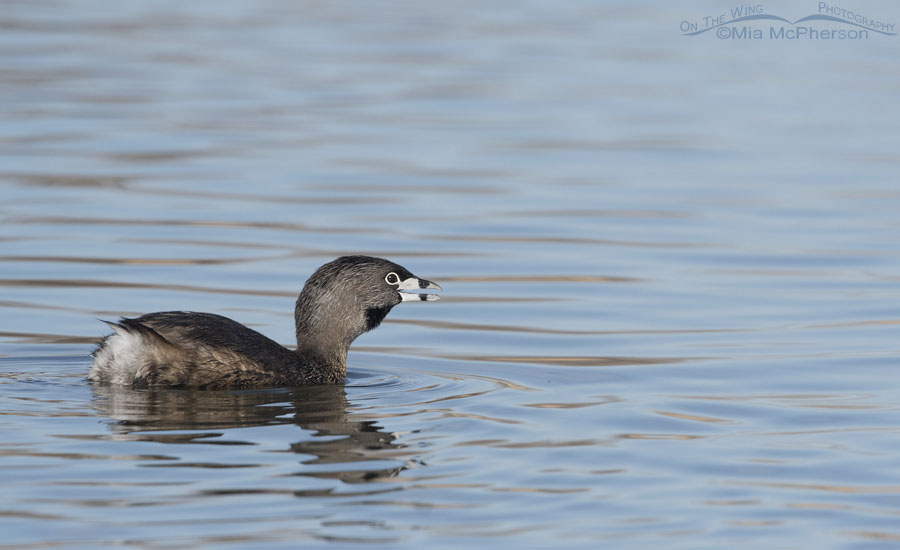Juvenal Plumage
 Young Pied-billed Grebe in juvenal plumage – Nikon D810, f7.1, 1/1600, ISO 500, Nikkor 500mm VR with 1.4x TC, natural light
Young Pied-billed Grebe in juvenal plumage – Nikon D810, f7.1, 1/1600, ISO 500, Nikkor 500mm VR with 1.4x TC, natural light
About a week ago I photographed a young Pied-billed Grebe that was still in juvenal plumage on a pond at Farmington Bay WMA. While it may seem late in the year to see a Pied-billed Grebe in this plumage phase I know for certain I have photographed them in this plumage as late as the first week of November in northern Utah.
Some people call Pied-billed Grebes “drab little birds” but, I am guessing they haven’t seen them when they are young because their heads can be quite colorful and the patterns on their heads are striking. This plumage phase is also called the “Stripe-head stage” and it is easy to see why it is called that.
Nonbreeding Plumage
 Pied-billed Grebe adult in nonbreeding plumage on a pond – Nikon D500, f11, 1/500, ISO 500, Nikkor 500mm VR with 1.4x TC, natural light, not baited
Pied-billed Grebe adult in nonbreeding plumage on a pond – Nikon D500, f11, 1/500, ISO 500, Nikkor 500mm VR with 1.4x TC, natural light, not baited
For sure Pied-billed Grebe adults are drabber as this image of one in nonbreeding plumage, or Definitive Basic Plumage, shows. In this plumage phase the markings on the bill of this species that gives them the first part of their common name isn’t highly visible. This photo was taken in winter at a local urban pond close to where I live.
The Pied-billed Grebes will stay at that pond until it ices over. Due to climate change that pond isn’t icing over as much as it used to and I may be able to see them all winter long from now on. Last winter there were only two days where I saw the pond completely iced over.
Breeding Plumage
 Calling adult Pied-billed Grebe in breeding plumage – Nikon D500, f7.1, 1/2500, ISO 500, Nikkor 500mm VR with 1.4x TC, natural light, not baited
Calling adult Pied-billed Grebe in breeding plumage – Nikon D500, f7.1, 1/2500, ISO 500, Nikkor 500mm VR with 1.4x TC, natural light, not baited
Around late January or early February I begin to see the changes that show Pied-billed Grebes are starting to get their breeding or Definitive Alternate Plumage. The feathers on their throats change to black, their crowns get darker, their bills get lighter colored and a black band appears on their bills. It is during this plumage phase that the “pied bill” that gives this species its common name is most noticeable. This image was taken in March of 2018 at Farmington Bay WMA.
In my opinion Pied-billed Grebes are feisty and fascinating birds to observe and photograph no matter what plumage phase they happen to be in but they are the cutest in their juvenal plumage.
Life is good.
Mia
Click here to see more of my Pied-billed Grebe photos plus facts and information about this species.


I think that they are beautiful at every stage. Thank you.
I think Pied-billed Grebes are pretty cute no matter what plumage phase they are in but I admit that that juvenal phase is the cutest.
I love the adorable baby face! I love these birds, maybe because I get to know them personally. So feisty they are endearing.